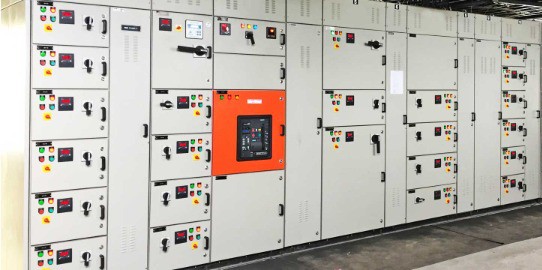The Role of Trip Circuit Supervision
The Trip Circuit Supervision Circuit senses any fault either in the trip coil of the breaker or the trip circuit. On sensing a fault, Trip Circuit Supervision Relay changes its contact status to window annunciation on the panel. Here fault in the circuit means any break or open circuit. In this post, we will be discussing the working principle of trip circuit supervision.
Basically, a breaker is equipped with two trip coils. Both the trip coil energizes if the relay issues a tripping command. On energization of the trip coil, the breaker mechanism opens the circuit breaker. Therefore, it is very important to monitor the trip coil’s healthiness otherwise during the requirement the breaker may not open to clear the fault. The figure below shows the simplified diagram of trip circuit supervision.

A Trip Circuit Supervision Relay is provided to monitor the healthiness of the trip coil. As there are two trip coils, therefore, there will be two Trip Circuit Supervision Relays and hence two different circuits. This Relay has three coils namely RLA, RLB and main coil (TCS) of the Relay as shown in the figure above. Now, a breaker may either be open or closed, therefore we need to monitor the healthiness in both the state of the breaker. Thus, trip circuit supervision is divided into pre-close and post-close supervision.
As shown in the figure, contacts A and B are breaker auxiliary contacts. Mind that theses contacts are connected to the breaker mechanism and therefore their status depends on the breaker position. If the breaker is open, contact A will be OPEN and contact B will be CLOSE. Similarly, if breaker is close, contact B will be OPEN and contact A will be CLOSE. Now we will consider pre-close and post close supervision separately.
Pre-close Trip Circuit Supervision:
Pre-close means that breaker is open. Thus, the status of contact A will be OPEN and that of B will be CLOSE. If you observe the circuit carefully, you will notice that, in this case current will be flowing through both the coils RLA and RLB. As coils RLA and RLB are energized, their contact will be close.

Now carefully observe the circuit of TCS Relay. Since RLA and RLB are close, DC supply will be extended and hence TCS relay will be energized. Therefore, its output contact 1-2 will be open and hence no window will appear. This means that trip circuit is healthy. Assume there is any open circuit, in such case as no current could flow through the coils RLA and RLB, hence relay TCS will not be energized. Because of this its output contact 1-2 will be close for window annunciation. This means to the operator that either DC supply has failed or there is some problem in the trip circuit.
Post Close Trip Circuit Supervision:
Post close means that breaker is close. Thus, the status of contact A will be CLOSE and that of B will be OPEN. If you observe the circuit carefully, you will notice that, in this case current will be flowing through both the coils RLA.

Now carefully observe the circuit of TCS Relay. Since output contact of RLA is close, DC supply will be extended to TCS relay and hence TCS relay will be energized. Therefore, its output contact 1-2 will be open and hence no window will appear. This means that trip circuit is healthy. Assume there is any open circuit, in such case as no current could flow through the coils RLA, hence relay TCS will not be energized.
Because of this its output contact 1-2 will be close to annunciate window. This means to the operator that either DC supply has failed or there is some problem in the trip circuit.
It shall be noticed that, as the resistance of relay coil is very less therefore a high resistance shall be connected in series so that less current flows through the circuit to operate the trip coil of the breaker. It shall also be noticed that, in case of protection trip, separately positive DC voltage is extended to the trip coil of circuit breaker so that full current flows through the trip coil to operate the breaker as clear from the figure.







